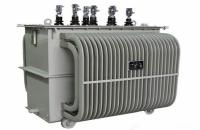
First, material selection and preparation form the foundation of lean production. High-quality silicon steel is a prerequisite for manufacturing high-performance iron cores. At this stage, strict inspection and screening ensure the chemical composition and physical properties of the silicon steel meet the design requirements. Establishing stable partnerships with suppliers ensures timely and consistent material supply, reducing inventory backlog and uncertainties in the supply chain.
Next, process optimization is the core of lean production. The processes of rolling, annealing, and cutting silicon steel require high precision and uniformity. Advanced automation and precision control systems minimize human error and enhance consistency in production. Process improvements, such as optimizing rolling parameters and annealing temperatures, further enhance the magnetic properties of silicon steel, meeting the demands of high-efficiency iron core manufacturing.

Second, traditional laminated cores are composed of stacked layers of silicon steel sheets, offering a more mature and cost-effective manufacturing process. This makes them highly competitive in the mid-to-low-end market. Additionally, laminated cores provide greater flexibility in design, allowing adjustments to the shape and size of the layers to meet diverse application requirements. However, challenges such as localized hysteresis and eddy current losses caused by interlayer contacts remain significant limitations to performance improvements.The third step, assembly and quality control, is crucial in lean production. The assembly process for iron cores requires precise alignment and tight interlayer bonding to minimize magnetic loss and improve overall performance. By implementing a comprehensive quality management system, each production step is closely monitored and inspected to ensure every silicon steel sheet meets the required standards. Tools like Statistical Process Control (SPC) monitor critical parameters in real-time, allowing for the early detection and correction of potential issues, ensuring product consistency and reliability.
Moreover, continuous improvement and employee training are integral to lean production. Establishing feedback mechanisms encourages employees to propose improvement suggestions, driving ongoing optimization of production processes. Regular training programs enhance employees' professional skills and understanding of lean production principles, enabling them to adapt effectively to changes and challenges in production. Fostering teamwork further boosts production efficiency and instills a strong sense of responsibility among employees.
Finally, supply chain management and resource optimization ensure the overall effectiveness of lean production. Close collaboration with suppliers and customers optimizes logistics and inventory management, reducing waiting times and resource waste during production. Lean tools such as Just-In-Time (JIT) and Kanban enable precise alignment between production and demand, enhancing the flexibility and responsiveness of the supply chain, thereby improving the overall efficiency and quality of iron core production.
In conclusion, the lean production process from silicon steel to iron core, involving material selection, process optimization, assembly and quality control, continuous improvement, and supply chain management, synergistically enhances the performance and production efficiency of iron cores. It also significantly reduces costs and resource waste, providing a solid foundation for the efficient operation of modern electrical equipment.
Characteristics and application of colored stainless steel sheet
2023-01-29The difference between 200, 300 and 400 series stainless steel
2023-10-09Application of Stainless Steel Materials in Decoration Engineering
2022-07-21Cold rolled non-oriented electrical steel with high reduction rate
2023-12-11Advantages and applications of stainless steel railings
2023-02-11Classification, application and heat treatment of stainless steel
2023-10-07






